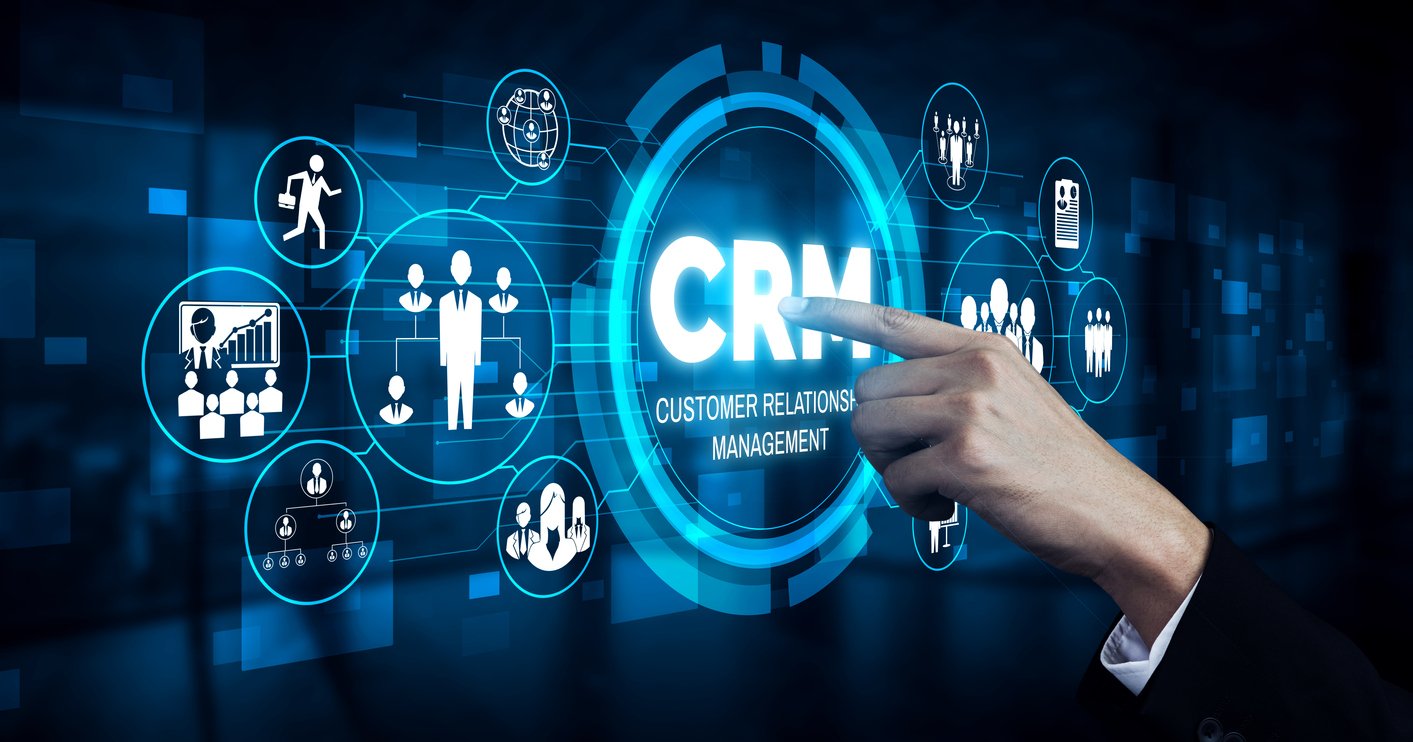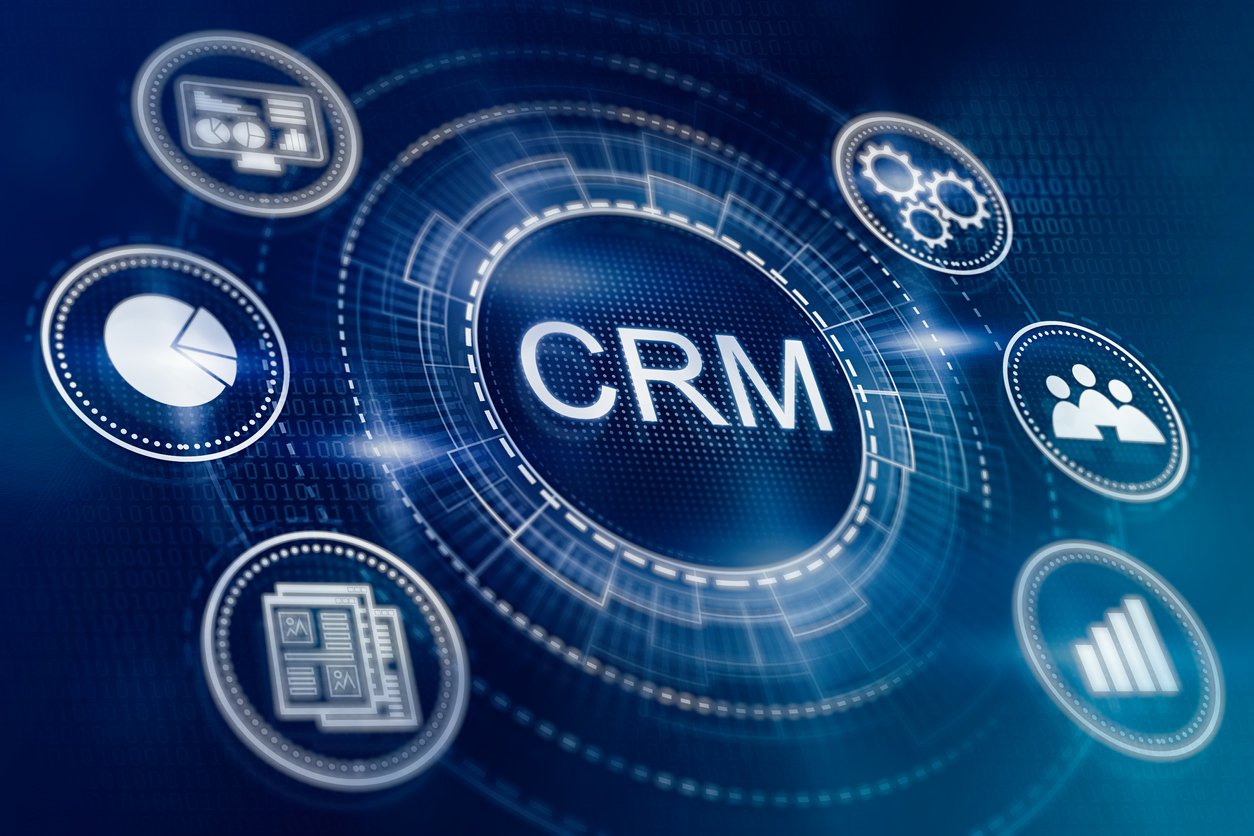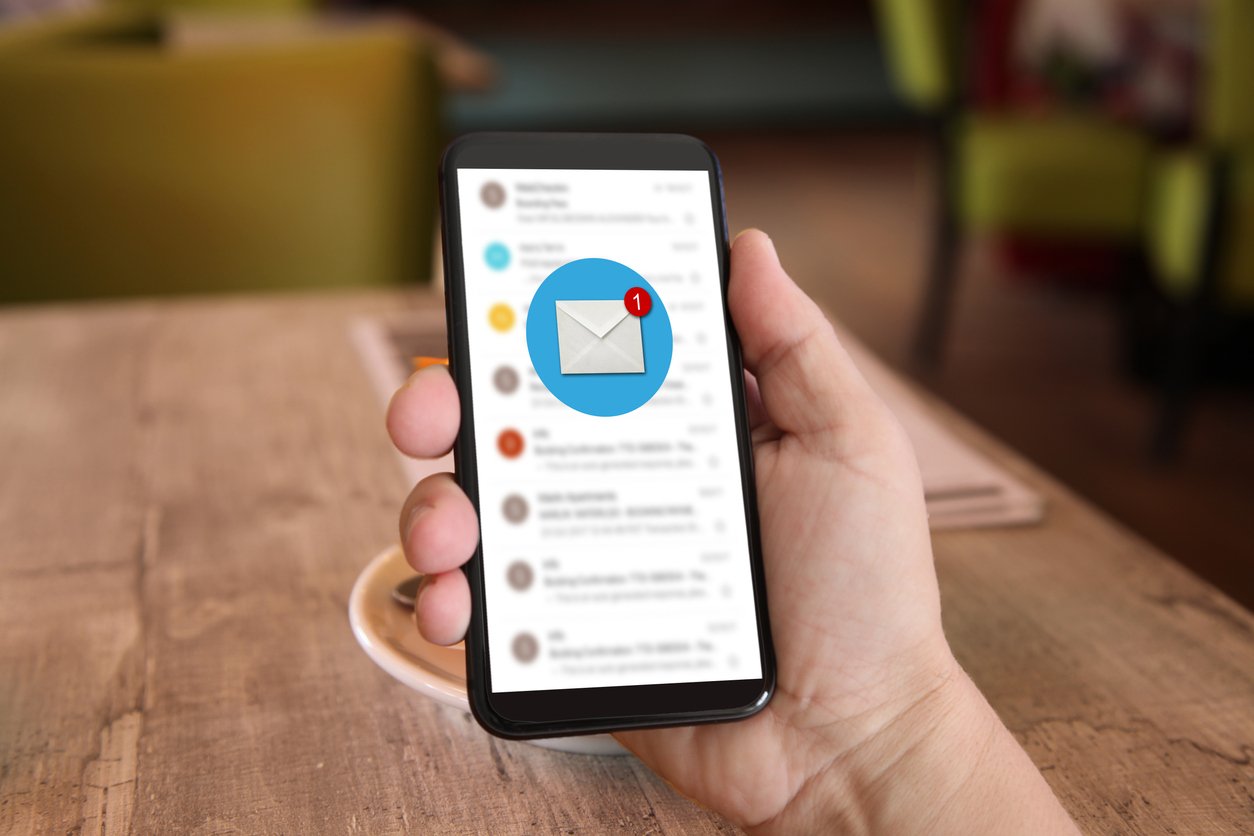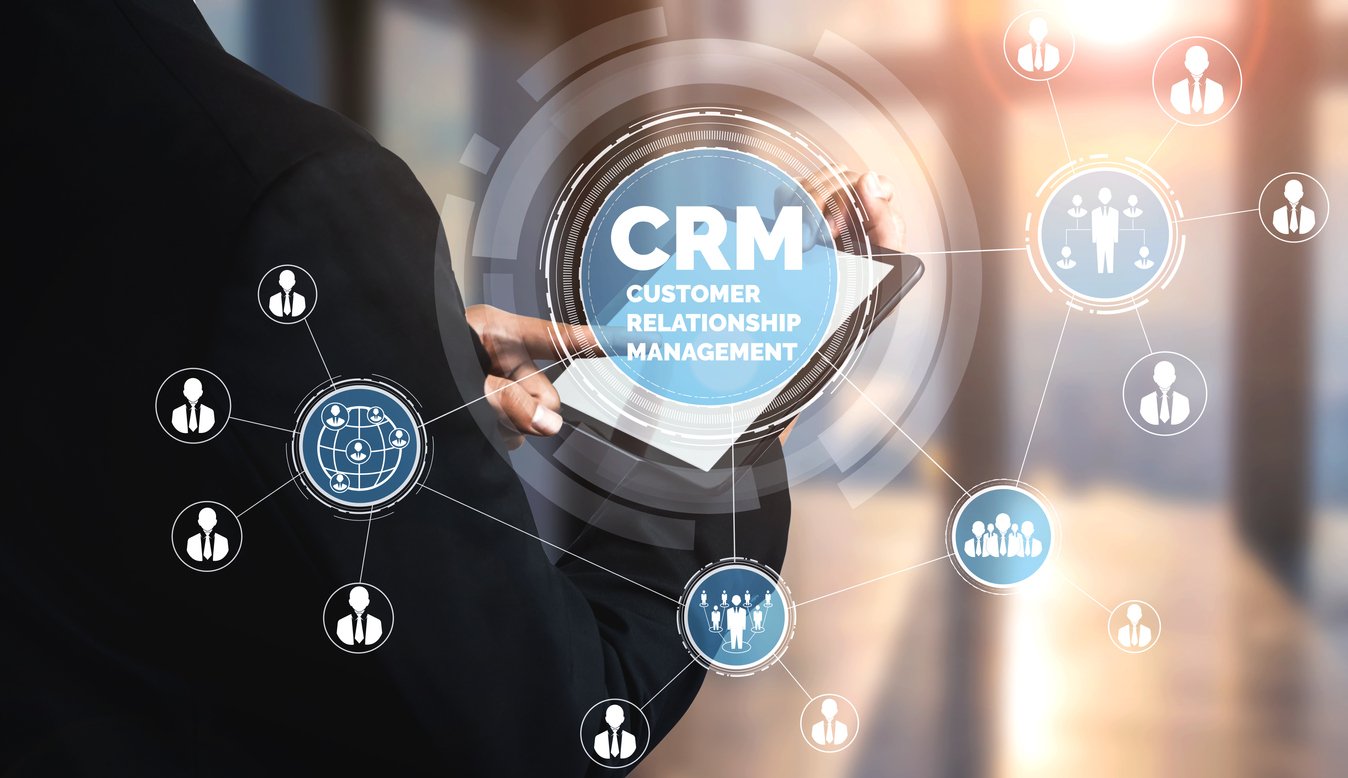
How Much Does a CRM Cost? [CRM Price Comparison Guide]
 Updated on
Updated on
 By Bradley Kovacs
By Bradley Kovacs
Bradley Kovacs
Bradley has been passionate about technology since childhood, starting with Microsoft Flight Simulator at age six. In college, he automated his data e...
learn more
Bradley Kovacs
Bradley has been passionate about technology since childhood, starting with Microsoft Flight Simulator at age six. In college, he automated his data e...
Table of Contents
Table of Contents
Trying to convince the higher-ups that it's finally time to invest in a CRM?
But as soon as they hear the words “technology”, it's like suddenly they've turned into a robot, and you've figured out the keyword to shutting them down?
New tech might be a hard sell on the surface, but these days, a sales CRM is an essential tool for literally any business.
In fact, The global CRM market is projected to grow to 113.46 billion USD by the end of 2027. And there are good reasons why the CRM market is growing at such a rapid rate.
- Customers increasingly want more personalized experiences. Companies who invest in personalization technology, whether it be adding their name to a marketing email or offering them a discount or promotion that matches their past spending habits, are more successful in retaining their customers.
- Customers want to buy from companies that understand their individual needs. This includes sending them tailored, relevant offers and communicating with them at the right time and place.
- Customers get frustrated when personalized experiences aren't delivered. The risk of not delivering personalized experiences to your customers is that they will move on to a company that does-meaning you've lost them before you've even got a chance to speak with them one-on-one.
One of the best ways to be able to organize customer information and deliver the personalized experiences that customers want is through a CRM. But even with the positives surrounding the software, it still might take some convincing for the higher-ups to shell out the cash to sustain a CRM subscription.
In this article, we explore the ins and outs of CRM price so that you're armed with the information you need to convince your bosses that investing in a CRM is not only a good idea, but also doesn't have to shatter your budget.
Basically, no matter what type of business you have, a CRM investment will help you not only deliver personalized customer experiences, it will help you sell faster and more efficiently and increase sales.
Why is a CRM a Valuable Addition to Your Business?
A CRM provides many benefits to the entire organization, not just sales and marketing. Because it acts as a centralized hub of information, it helps democratize access to important data while still ensuring that sensitive and confidential information remains secure. Some actionable ways that a CRM proves to be valuable for all types of businesses include:
- Streamlining lead management. By capturing incoming leads and helping to organize them by priority, a CRM like Ringy that includes a lead management system helps keep marketing and sales aligned and aware of progress with incoming leads.
- Data can be used to create better marketing initiatives. When we talk about data democratization, one of the ways that easier access to data is useful is when marketing can easily access sales data. They can then use this data to help improve future campaigns and get even better results.
- Customer service can be improved. With customer profiles and account history at their fingertips, customer service and technical support teams can provide better and faster service to all customers. Reps will be better able to understand the context behind interactions, leading to enhanced customer satisfaction.
- Performance and accountability can be more easily monitored. When sales and marketing data is all in one place, it's much easier for management and other stakeholders to check in on the progress and performance of individual reps or teams. With Ringy, they can easily view performance metrics on customizable dashboards.
CRM Price Breakdown: What Makes a CRM Expensive?

Like all software, CRM software cost will depend on the features it brings the user.
More features typically mean more development time, which includes programming, graphic design, writing, and more, so it's no surprise that those costs are factored into the final CRM price.
But there are other reasons that are often overlooked that also affect the CRM price:
- Monthly vs. yearly subscription
- CRM Cost per user
- Time investment costs
- Extra cost for premium add-ons
- Onboarding costs
Monthly vs. yearly subscription
There's a lot of confusion around pricing for most CRMs, and for good reason. Many CRMs offer incentives to sign up for a longer period of time by reducing the CRM price per month, with yearly commitments being the norm for the lowest price point.
When you're looking at a CRM investment, be sure to pay attention to whether there are differences in month-to-month vs. annual pricing. This is usually segmented on the CRM's pricing page by tabs.
If the price difference between monthly and yearly isn't listed, it could be worth your while to reach out to their sales team to figure out the total pricing for your company.
However, if you're looking for pricing upfront, the extra step of having to contact a sales team might put you off. This is a great reason why a transparent CRM price should be listed on a company's pricing page every time.
CRM Cost per user
Perhaps you've seen this before, especially if you're researching CRM software cost: it lists the price at the top of a pricing chart, and you think that's what you're paying per month. But of course, in most cases, you'd be wrong. The more users you have, the more the CRM price increases.
Because a typical CRM charges by the user, you might find your final costs increase astronomically before you even know what hit you. In fact, a lot of CRM companies don't even list the cost if you require more than a few users, as at that point you're better off contacting their sales team and negotiating a price.
Time investment costs
Probably one of the easiest hidden costs to miss when calculating the total CRM price of the software you chose is a time investment.
Like all new software that you implement in your organization's tech stack, you're going to have to consider the time you need to invest in setting up the software, transferring data into it, and onboarding employees so they understand how to use it.
When considering the time investment needed in a CRM price calculation, be sure to ask yourself the following questions:
- How much time will it take to fully implement the CRM? What does that translate to in employee wages?
- Can we continue to do sales while the new CRM is being set up? Where will customer data be stored in the interim if sales continue?
- Do we need to hire a developer for any custom coding or to handle any integrations (third-party apps that complement the CRM) that we may need?
- How can we transfer the data from our legacy system into the new CRM? How long will that process take?
- How long will it take to train employees on how to use the new CRM?
As you can see, time investment can sometimes be the biggest hidden cost when implementing a new CRM. While the time commitment is necessary and often worth it in the long run, it's important to understand what those costs will be before you're sure of the final CRM price rather than have these costs pop up later and surprise you.
Extra cost for premium add-ons
It's happened to the best of us: you're looking at a shiny new CRM with a ton of features that get you excited about the benefits they will bring to your organization. But once you hit the buy button, you realize that a lot of these features are charged separately from the CRM price as add-ons.
It's disappointing, but it's actually really common for CRMs to take their best features and place them behind a paywall. It's done as a way to increase ARPU (Average Revenue Per Customer), as a way to showcase new features as they are added to the CRM or to simply obfuscate the total CRM software cost.
Onboarding costs
Another big hidden cost with most CRMs is onboarding. When you purchase a new piece of software, you're not going to automatically know how to use it. In most cases, you need to reach out to the experts (the people who sold you the CRM) for questions and concerns and to help you properly set up the software.
While most CRMs include live agent or email support with a subscription, more hands-on onboarding services are either not available or have an extra cost associated with them. It makes sense in a way-it can take a lot of time to onboard an entire company with a new CRM.
However, onboarding costs are often hidden in the fine print, and therefore most organizations overlook them when choosing a CRM. Onboarding is extremely important to get yourself and your organization properly set up with a new CRM, so it's worth your while to pay attention to it when finalizing the CRM price.
Is there a CRM that just includes everything upfront? The answer is yes!
With Ringy, you're not only getting completely transparent pricing ($99 per month for unlimited users), but you also get to take advantage of the complete CRM with no features hidden behind paywalls-every feature of the CRM is available with a subscription or through pay-as-you-go.
You also get free onboarding with a live agent to ensure that you're set up properly and ready to use the CRM to its full potential.
Ready to get started? Sign up for your free trial of Ringy today.
CRM Price Explained

Maybe you've figured out how much a CRM you want will cost and have considered all the possible hidden fees associated with the final CRM price.
But pricing is subjective, and which CRM provides the best bang for your buck is completely up to you.
Sometimes, you have to go back and ask yourself the high-level questions:
How much should I spend on a CRM?
Ah yes, the ultimate question. But how much should you spend on a CRM? Well, it heavily depends on what features you need and the time commitment required for things like training employees, transferring data from legacy systems, and developer costs.
The typical price range of a sales CRM ranges anywhere from around $10 to $20 per month per user for a CRM fit for a small business that only needs the basics to $50 to $150 per user per month for a CRM with more advanced features that would satisfy larger, enterprise-level businesses. Finally, more full-featured CRMs like Salesforce can charge upwards of $300 per user per month.
Is it worth it to invest in a CRM?
It is absolutely worth it to invest in a CRM for your business, regardless of what size it is. A CRM organizes customer information so you can provide more personalized experiences, gives you insight into your sales process, marketing, and customer service efforts with the click of a button, helps you get things done faster, and more.
How can I save money on a CRM?
The best way to save money on a CRM is to paint yourself the most accurate picture of what implementing a CRM will cost your company.
We say this because hidden fees and unforeseen costs can quickly add up to make even a seemingly inexpensive CRM cost way more than you thought it would.
Here are some suggestions of what to look for or prepare for to save your organization money on a CRM:
- Look for transparent pricing
- Factor in any potential hidden fees into the final CRM price
- Focus on the features you need
- Compare CRM prices beforehand
Factors that Impact CRM Costs
There are a variety of factors that can significantly impact CRM costs. These include the features that you're looking for, the number of users you need to have on the system, and the number of contacts you need to store.
1. Features
Before you bite the bullet on a new CRM, it's important to consider which features you actually need and which are just nice to have. Make a list of important features, like VoIP compatibility, effective lead management, insights and reporting, contact organization (e.g., categorization and tags), and more. Once you have your list, you'll have an easier time comparing different CRM offerings and narrowing down your choices.
2. Number of Users
Many CRMs charge per user, which means that CRM cost can be significantly affected by the number of users that are active on the system. This means you'll want to carefully curate how many active users you have on the system at one time and be sure to archive inactive users so you won't get charged for them.
3. Number of Contacts
Some CRMs limit contact storage or charge for additional contacts and/or leads above a certain amount depending on the plan that you are on. Because of this, you'll want to clean your contact and lead lists in advance and determine how many contacts you actually need. It's important to note that Ringy doesn't charge for the number of contacts or leads stored in your system.
4. Integrations
To have a unified tech stack and to boost the functionality of your CRM, integrating other software with it is necessary. Some CRM vendors offer a store where you can download ready-to-go integrations, usually for an additional cost that's either a one-time fee or subscription through the original developer, or provide an API, a standardized piece of code that makes facilitating an integration relatively simple in most cases.
5. Implementation (Onboarding and Training)
While most CRMs will include some form of onboarding or tutorial in their software, additional onboarding and implementation may come with an additional cost, which is usually charged as a one-time onboarding fee. Usually this onboarding is just for key stakeholders like managers and owners, so you'll likely also have to set aside time internally for training your teams on how to use the software effectively.
In addition, you'll need to consider an implementation plan, which once again is either charged as a separate fee (sometimes including in the onboarding cost) and includes setting up the software for your business. In most cases, this can be done by your IT team, but you may need the vendor's support for API and integration testing.
How to Determine Your CRM's Return on Investment (ROI)
Through better organization and prioritization of leads, and being able to help customers easier and more effectively through easy-to-access customer profiles and interaction history, you will likely notice an increase in sales revenue after implementing your sales software CRM. You'll also likely notice more retained customers and enhanced productivity and efficiency of your teams.
Calculating a number for overall ROI might be tricky, however, because the gains that you're noticing are more behind the scenes and ones that you can't really assign a quantifiable value to, but actually do have a positive impact on your revenue.
However, there is one quick calculation that you can perform to see your CRM's general ROI:
Revenue Increase Following Implementation - CRM Implementation Costs / Cost of CRM Investment
If you find that your return on investment isn't exactly what you'd hoped, there are a few features of your CRM that you might not be fully taking advantage of:
|
CRM Feature Leading to Increased ROI |
Description |
|
Automatic lead assignment |
By setting up criteria for incoming leads, you can isolate the ones that need to be acted on right away and automatically assign them to the appropriate sales rep. This way, the rep can contact them as soon as possible. |
|
Automatic responses |
If you respond to a lead within the first five minutes of them contacting your company, then you have a significantly higher chance of landing a sale. Automated responses through email or SMS can be set to engage with leads immediately so that leads won't feel like they're being ignored. |
|
VoIP calling |
Built-in VoIP calling features, like what is offered through Ringy, are important to take advantage of to increase the efficiency of your sales team. The more calls that are made in a day, the more opportunities for sales. |
CRM Price Comparison Guide
It's obvious that different CRMs are going to have different pricing strategies, but they still have to remain competitive with each other, meaning that you might find the base price similar for many CRMs with the features you want.
This can cause more confusion when choosing a CRM investment, as now you're faced with multiple options that seemingly cost the same and have the same features.
So let's take a look at some popular CRMs that are priced similarly to Ringy, and see if that price remains the same when you consider the cost factors we outlined in a previous section in this article:
- Monthly vs. yearly subscription
- Cost per user
- Extra cost for premium add-ons
- Onboarding costs
Here are 10 different CRMs that are priced comparatively to Ringy so you can see how they stack up against us:
|
CRM name |
Monthly vs. Yearly Subscription Cost* |
Cost per User |
Premium Add-on Costs |
Onboarding Costs |
|
Ringy |
$109 per month (no difference in monthly or yearly pricing) |
Unlimited users are included in the $109 per month fee |
None, all the CRM features are included |
Free |
|
NetHunt |
Starts at $30 for monthly pricing, $24 for yearly pricing |
Yes, monthly and the yearly cost is per user |
Higher tiered plans are available with more features |
Free with all plans |
|
Pipedrive |
Starts at $ 18 for monthly pricing, $14.90 for yearly pricing |
Yes, monthly and the yearly cost is per user |
Higher tiered plans are available with more features, plus add-ons are available |
Free with all plans |
|
Zendesk (sales) |
Starts at $19 per month (only yearly pricing is offered) |
Yes, the cost per month is per user |
Higher tiered plans are available with more features, plus add-ons are available |
Online training courses are available for free, private one-on-one training is $1000 per course |
|
Keap |
Pricing is monthly and based on how many customer contacts you need, and starts at $199 (monthly) or $159 (annually) for 1500 contacts (per user) |
Yes, the cost per month is per user |
Higher tiered plans are available with more features |
Each plan requires a one-time payment of $499 for onboarding |
|
Copper |
Starts at USD $29 for monthly pricing, $25 for yearly pricing |
Yes, monthly and the yearly cost is per user |
Higher tiered plans are available with more features |
Onboarding isn't mentioned, but live chat, email, and online resources are available |
|
Nutshell (sales) |
Starts at $19 for monthly pricing, $16 for yearly pricing |
Yes, monthly and the yearly cost is per user |
A higher tiered plan is available with more features, Nutshell Marketing can be added on at an additional monthly cost |
Free with all plans |
|
Engagebay |
Offers a free plan (15 users max) paid plans start at $14.99 for monthly pricing, $13.79 for yearly pricing, and $12.74 for biannual pricing |
Yes, monthly, yearly, and biannual cost is per user |
Higher tiered plans are available with more features |
Email and chat support is available with every plan, but onboarding sessions are only available on the third and fourth tiered plans |
|
Salesmate |
Starts at USD $29 for monthly pricing, $23 for yearly pricing |
Yes, monthly and the yearly cost is per user |
Higher tiered plans are available with more features, plus add-ons are available |
Free with all plans |
|
Really Simple Systems (now Spotler CRM) |
Offers a free trial plan, paid plans start at $50 per month (only yearly pricing is offered) |
Yes, the cost per month is per user |
Higher tiered plans are available with more features, plus add-ons are available |
Free with all plans |
|
Freshsales (Freshworks) |
Offers a free plan, paid plans start at $18 for monthly pricing, $15 for yearly pricing |
Yes, monthly and the yearly cost is per user |
Higher tiered plans are available with more features, plus add-ons are available |
Onboarding isn't mentioned, but every plan includes 24 hours 5 day a week phone, email, and chat support |
*Pricing as of January 2024
Frequently Asked Questions (FAQ)
We get it: CRMs are complex, and you probably still have questions about them. Let's go through some frequently asked questions about CRM prices.
1. How do you calculate CRM cost?
Before you can calculate the cost of a CRM, you need to determine whether you want to pay monthly or yearly.
Most CRMs offer both monthly and yearly subscription options. Monthly pricing is typically a bit more, but you can cancel at any time. This is the best option if you're still on the fence about whether the CRM you've chosen works for your business and you need a few months of testing to figure it out.
Once you've picked a subscription, be sure to consider any applicable taxes for your area that would factor into the final price. If you're unsure, reach out to the CRM's sales team for more information.
2. What is the cheapest CRM?
The cheapest CRM would be the free version, of course. But that's not necessarily the best choice for your business.
As they say, you get what you pay for.
The cheapest CRM is going to be the one that provides exactly what your business needs to be more efficient, sell more, enhance your customer's experience, and fit in nicely with your existing tech stack.
In other words, the cheapest CRM for one business might be the most expensive CRM for another. The most important thing is to determine what your business needs to get out of the CRM and whether the cost of the software brings those needs to life.
3. How do you calculate ROI for CRM?
Calculating the ROI for a CRM is not the same as an advertising campaign, for example, where you can punch in a bunch of numbers and get a number in return that tells you your ROI.
Rather, you need to consider why you decided to purchase a CRM in the first place and if the CRM is meeting that decision. Just because numbers aren't involved doesn't mean there isn't an ROI to be found.
For example, if you wanted to purchase a CRM so you could increase revenue growth, employee productivity, and internal collaboration, did the CRM fulfill those needs?
If it did, then that's your ROI right there.
3. What does CRM in sales mean?
In sales, a CRM helps track leads, sales rep and team performance, individual customer information, and more.
Salespeople often have to balance nurturing new leads, maintaining relationships with existing customers, and prospecting all at once. A CRM is an effective tool for helping sales reps manage their workload and stay organized.
Conclusion

When it comes to pricing out a CRM, there are so many factors to consider that it can seem overwhelming.
When you're checking out multiple CRM websites to determine the best price, you'll be left wondering why CRM pricing can't just be a bit more transparent.
At the end of the day, customers are going to figure out how much something costs anyway, so why not just be upfront about it? Sure there are marketing reasons behind the way pricing is set up, but nobody likes fees and extra costs that they didn't expect.
To recap, when you're shopping for the best CRM price, you should look for:
- Transparent pricing
- Onboarding costs
- Time investment costs (development time, training time, etc.)
- Costs per user (how many users will you need?)
In addition, it's safest if you give yourself a bit of a buffer in your budget just in case any unexpected additional costs come up.
If you're still on the journey to finding the best CRM solution for your organization, be sure to request a demo with Ringy. We'll walk you through all our CRM features and show you how they can be of benefit to your organization.

Skyrocket your sales with the CRM that does it all.
Calling? Check. SMS? Check. Automation and AI? Check. Effortlessly keep in touch with your customers and boost your revenue without limits.

Take your sales to new heights with Ringy.
Sales in a slump? Ringy gives you the tools and flexibility you need to capture leads, engage with them, and turn them into customers.
Subscribe to Our Blog
Enter your email to get the latest updates sent straight to your inbox!
Categories
Related Articles




































































































